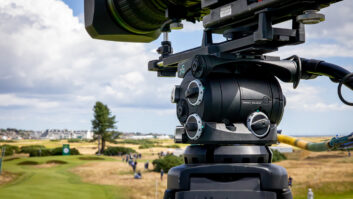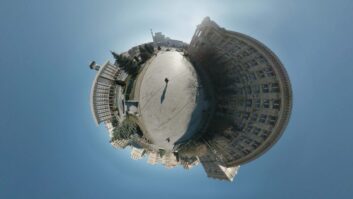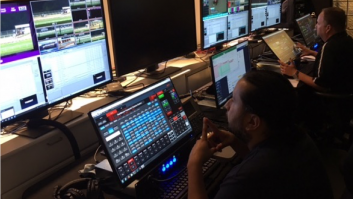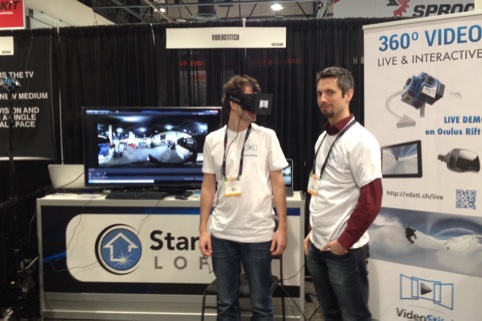
VideoStitch, a Paris-based start-up specialising in 360º video products, has developed post production software to stitch videos together from several GoPro cameras.
The company was set up by CEO Nicolas Burtey, because he needed something to stitch his video together when, in 2010, he made a big 360º video campaign for Renault, but couldn’t find suitable, dedicated software on the market.
Most of his videos were shot with three 5D Mark II + 8 mm fisheye, “and stitching them together was a nightmare. We had to go everywhere in the world, and most of the time, we couldn’t make sure what the footage looked like before going back to France and spending nights to stitch the videos. We were shooting several hours per day, and at that time, we needed about one hour to stitch one minute of videos,” he said.
Now its post production software is becoming established and has reached version 1.2.2, which is set up for 64-bit operating systems and nVidia graphics cards. The system will work on Windows, OS X and Linux.
Its latest product is VideoStitch Live, a realtime version that promises to give users “a great new out-of-body VR experience.”
It combines six GoPro streams into a fully spherical video stream. This content is then rendered through a media server to be viewed using an Oculus Rift virtual reality headset or a tablet, and is claimed to be as realistic as being there.
The combined stream from the GoPros gives a 360ºx180º view, allowing users to see all around them, with no black hole in the video. The system can work with more professional cameras, but VideoStitch chose the GoPro as it meant the resulting package could be compact and inexpensive.
VideoStitch Live is claimed to be “the fastest engine out there, capable of stitching 4K and above videos in realtime, thanks to its scalable GPU-based architecture,” using nVidia’s CUDA parallel computing platform and programming model. A low-cost nVidia card, like the 4GB GT 640, has 384 CUDA cores for about €100 and can stitch together an image with a maximum size of about 8000×4000. The most powerful GTX Titan, which has 2688 CUDA cores and costs about €1,000, can stitch together ultra high-resolution video, with a maximum size of about 10,000×5000. The software will work with Windows Vista or later (64-bit version) and at least Mac OS 10.6.8.
Suitable applications for the technology include sport (including immersive action from the competitor’s point of view), training videos, or attending a concert from the best seat, or tourism videos that allow users to experience being in some of the most beautiful places of the world.
In order to get the best results and flexible re-encoding, it is recommended to stitch to output sizes that are multiples of eight (for equirectangular projection, which has a ratio of 2:1, that would give: 1920×960, 2048×1024, 2880×1440, 3840×1960, 4096×2048, etc.).
VideoStitch is able to process images from any type of camera, from rectilinear to fisheye lenses, and the company will create custom stitching templates for particular set ups. For work with GoPros it offers a range of different rigs, from €399 for the H3PRO-6 (pictured), which holds six GoPros outputting up to 3840×1920 at 100/60/48fps or 5600×2800 at 60/48/30fps video output, if using GoPro Hero3+ Black edition cameras (there are also rigs that hold seven or 10 cameras for 8000×4000 resolution output).
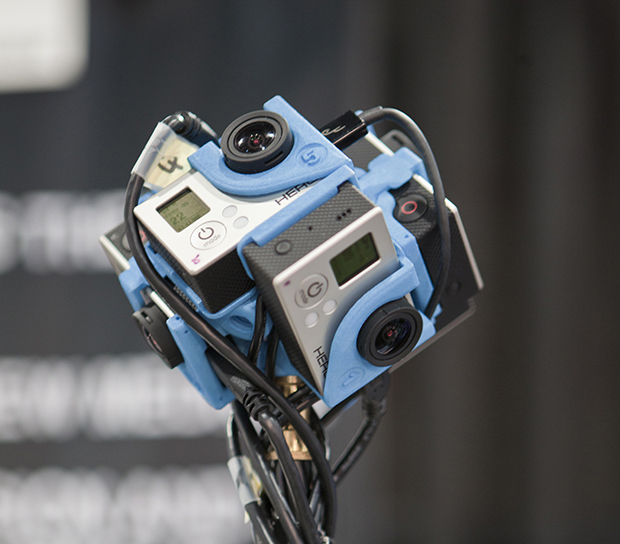
GoPro camera arrays, like consumer/DIY camera array systems in general, tend to suffer from synchronisation issues. All the cameras in the array will not start together and have to be synchronised in VideoStitch to avoid visible artefacts, but the company promises that “this synchronisation is accurate down to a recorded frame interval.”
To help reduce any synchronisation artefacts, it recommends shooting at the highest possible frame rates, although if shooting with a static camera slower frame rates can be used. It is also vital that all the cameras in the array use the same settings.
